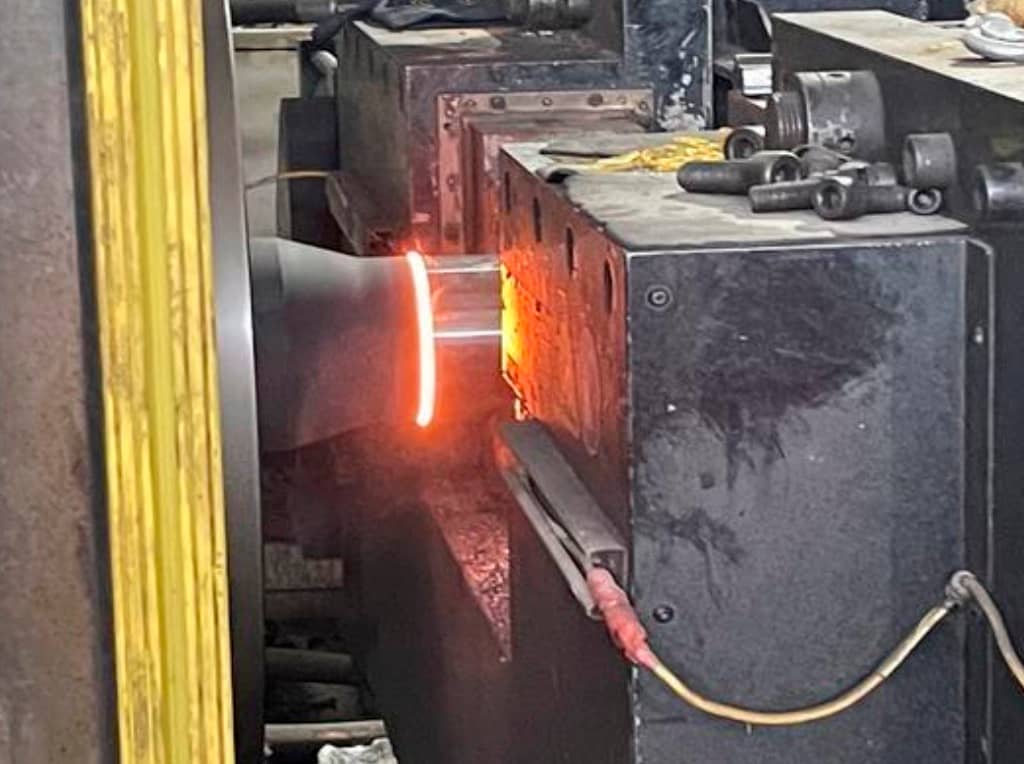Drill Pipe Friction Welding: An In-Depth Exploration

Drill pipe friction welding is a crucial process in the oil and gas industry, playing a significant role in the construction and maintenance of drilling operations. In this comprehensive post, we will delve into the world of drill pipe friction welding, discussing its techniques, benefits, challenges, and the latest advancements.
Introduction to Drill Pipe Friction Welding
Drill pipe friction welding is a specialized welding method used to join sections of drill pipe together. This process is essential for creating continuous and reliable drill strings that can withstand the harsh conditions and high stresses encountered during drilling operations.
The Mechanics of Drill Pipe Friction Welding
- Frictional Heating: The process begins with the application of high rotational speeds between the two pipe ends, generating intense heat through friction.
- Forge Phase: As the heat builds up, the material undergoes plastic deformation, and the two pipe ends are forged together.
- Cooling and Solidification: After the welding is complete, the joint cools and solidifies, forming a strong and durable bond.
Techniques
- Continuous Drive Welding: This is the most common method, where one pipe end rotates while the other is held stationary.
- Inertia Welding: Utilizes the momentum of the rotating pipe to generate the necessary heat and pressure for welding.
Benefits of Drill Pipe Friction Welding
- High Structural Integrity: The welded joints offer excellent strength and durability, ensuring the safety of the drilling operation.
- Cost-Effective: Compared to other joining methods, friction welding is more economical in the long run.
- Reduced Downtime: Faster welding times minimize the interruption to drilling activities.
Challenges
- Material Variability: Different grades and compositions of drill pipe can pose challenges in achieving consistent weld quality.
- Thermal Distortion: The heat generated during welding can cause the pipe to distort, affecting the accuracy of the joint.
- Quality Control: Ensuring proper weld integrity and meeting strict industry standards is crucial.
Quality Assurance and Inspection
- Non-Destructive Testing (NDT): Techniques such as ultrasonic testing, radiography, and magnetic particle testing are used to detect any defects in the weld.
- Visual Inspection: Careful examination of the weld surface for any visible anomalies.
- Mechanical Testing: Conducting tests to evaluate the strength and performance of the welded joint.
Advancements in Drill Pipe Friction Welding Technology
- Automation and Robotics: The use of automated systems and robots to improve the precision and consistency of the welding process.
- Innovative Monitoring Systems: Real-time monitoring of the welding parameters to ensure optimal weld quality.
- New Welding Materials: The development of advanced materials to enhance the performance of the welded joint.
Case Studies of Drill Pipe Friction Welding Applications
- Deep-Sea Drilling Projects: Illustrating the importance of reliable drill pipe welding in challenging offshore environments.
- Onshore Drilling Operations: Highlighting the effectiveness of friction welding in various onshore drilling scenarios.
Conclusion
A critical technology that enables the efficient and safe operation of drilling activities. By understanding the techniques, benefits, challenges, and advancements in this field, we can better appreciate the importance of quality welds in the oil and gas industry. As technology continues to evolve, the future of drill pipe friction welding looks promising, with ongoing improvements in quality, efficiency, and reliability.
In conclusion, drill pipe friction welding is a complex yet essential process that plays a vital role in the oil and gas sector. With the right knowledge and techniques, this welding method can provide strong and dependable drill pipe joints that contribute to the success of drilling operations and the exploration of valuable resources.
Learn more Successful Arctic module fabrication, steel structure, modular and skid, steelwork, supplier audit, DNV Class, Oil & Gas, welding supervisor, welding quality inspection, CWI CSWIP welding inspector, pump and pipe, stainless steel fabrication and CNAS ISO 17025 9712 NDT NDE practice via below-
https://www.jsc-safe.com/steel-structures-modules-machining/
